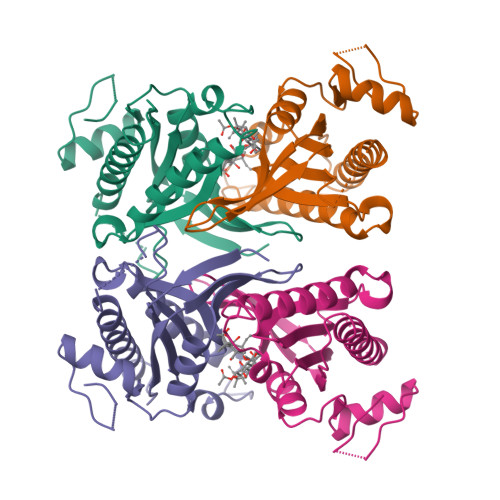Structure of the adenylyl cyclase catalytic core.
Zhang, G., Liu, Y., Ruoho, A.E., Hurley, J.H.(1997) Nature 386: 247-253
- PubMed: 9069282
- DOI: https://doi.org/10.1038/386247a0
- Primary Citation of Related Structures:
1AB8 - PubMed Abstract:
Mammalian adenylyl cyclases contain two conserved regions, C1 and C2, which are responsible for forskolin- and G-protein-stimulated catalysis. The structure of the C2 catalytic region of type II rat adenylyl cyclase has an alpha/beta class fold in a wreath-like dimer, which has a central cleft. Two forskolin molecules bind in hydrophobic pockets at the ends of cleft. The central part of the cleft is lined by charged residues implicated in ATP binding. Forskolin appears to activate adenylyl cyclase by promoting the assembly of the active dimer and by direct interaction within the catalytic cleft. Other adenylyl cyclase regulators act at the dimer interface or on a flexible C-terminal region.
Organizational Affiliation:
Laboratory of Molecular Biology, National Institute of Diabetes, Digestive, and Kidney Diseases, National Institutes of Health, Bethesda, Maryland 20892-0580, USA.


















